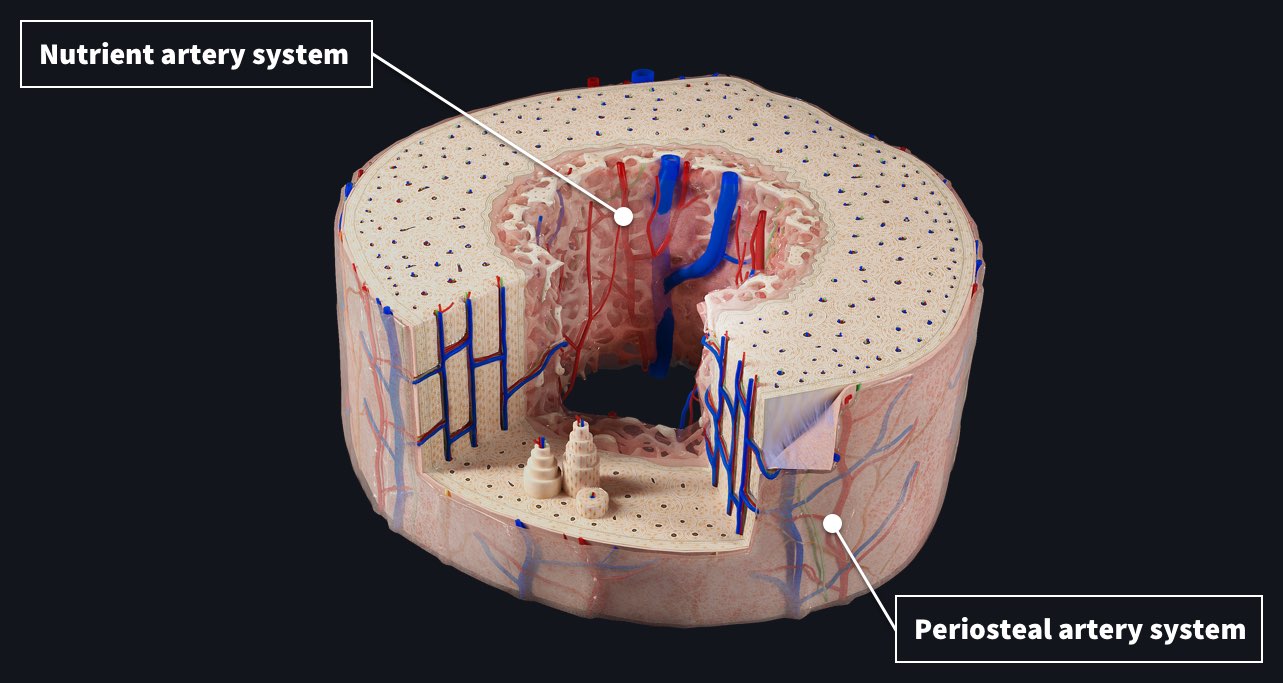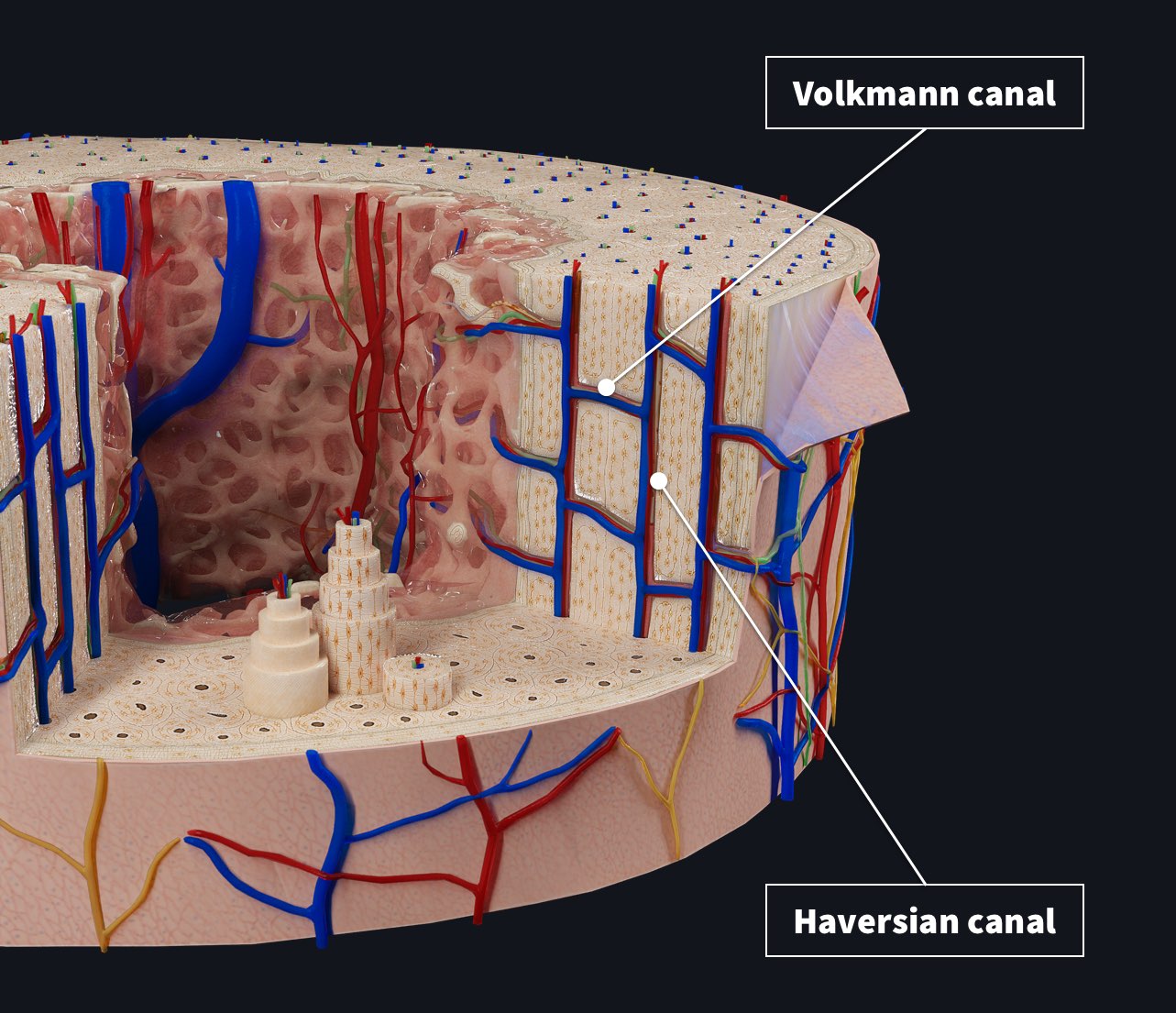
Every 7 years our skeletal system replenishes itself from collagen in our bones. Not only does our skeleton allow us to move, but it protects our organs, manufactures blood cells, and regulates minerals to help our entire body function. ?
The blood supply to this system is sometimes overlooked. Bones receive about 10% of cardiac output ?. Compared to cartilage, the blood supply to the bone allows for a higher degree of cellularity, remodeling and repairing ⚒.
Blood supply to the long bones comes from these three main sources:
- Nutrient artery system
- Metaphyseal-epiphyseal system
- Periosteal system
The nutrient artery system is a high-pressure system that branches from major systemic arteries. It enters through the cortex via the nutrient foramen and then migrates into the medullary canal. There it branches into ascending and descending branches that then further branch out into arterioles and supply the inner 2/3 of bone within the Haversian system.
The metaphyseal-epiphyseal arteries arise from the periarticular plexus, that is found around the joint area of a long bone.

The periosteal artery system is a low-pressure system that supplies the outer 1/3 of bone and is connected through Haversian and Volkmann canals. These canals are part of the osteon structure of the cortex.
As we age, our bones lose their strength. To keep them strong, a variety of calcium-rich foods such as dairy products, broccoli, and certain fish is recommended ???. Exercise of the weight-bearing nature also helps your skeletal system support you for a lifetime of movement ?.
Study the skeletal system like never before with the world’s most advanced 3D anatomy atlas, in addition to the Bone Cross-Section detailed model. To unlock the power of Complete Anatomy today, sign up for a FREE 3-day trial.
If you found this blog post useful, you might also enjoy learning about the differences between the male and female bony pelvises.